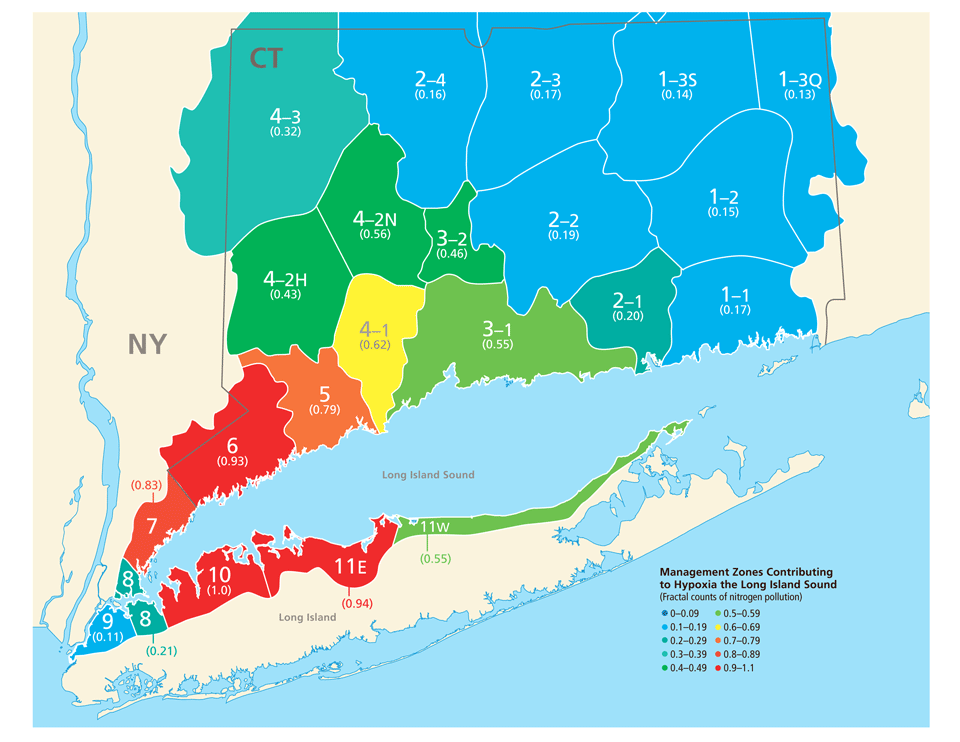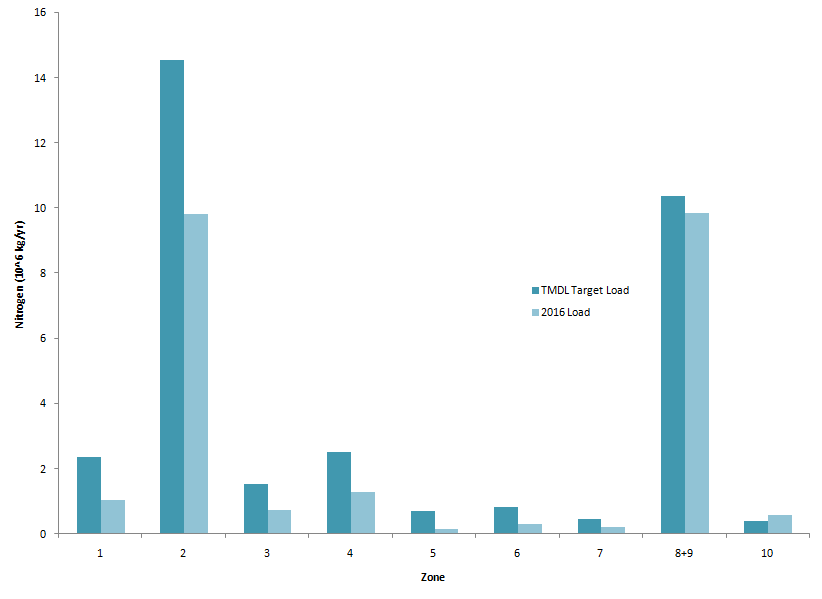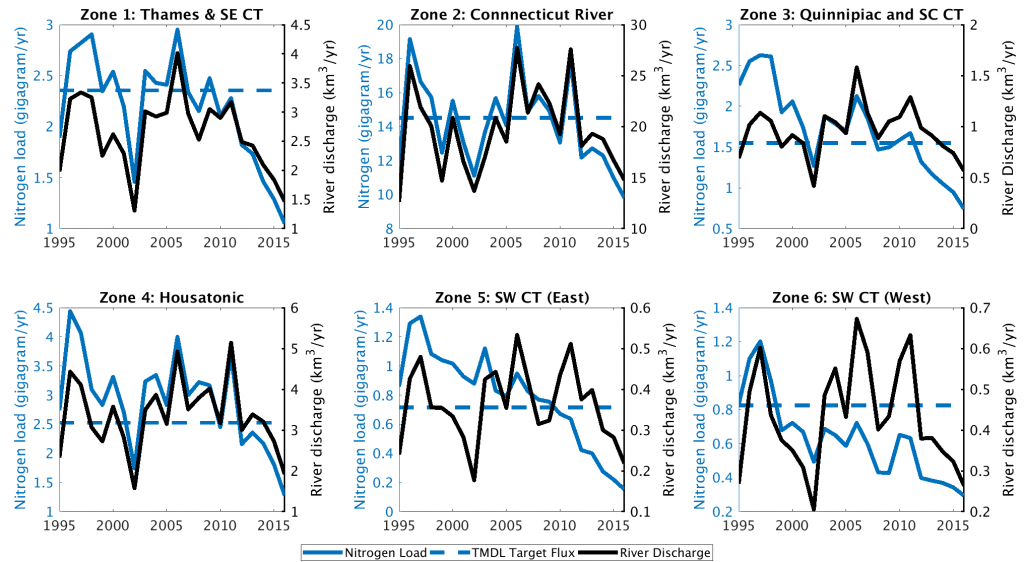Western Long Island Sound experiences seasonal low dissolved oxygen levels, or hypoxia, in its bottom waters. Anthropogenic nitrogen loading into Long Island Sound (LIS) tends to exacerbate hypoxia. In 2000, a Total Maximum Daily Load (TMDL) for nitrogen in Long Island Sound was established [1]. Our research (funded by the Long Island Sound Study) has updated estimates for nitrogen loading (see methods below) to determine if TMDL targets are being met.

The LIS TMDL divides the sound’s New York and Connecticut watershed into numbered management zones (Figure 1). The total Long Island Sound watershed also encompasses parts of other New England states that are not managed by the TMDL but are included in the estimates of total load.
Results
Our estimates indicate that the TMDL targets were met in 2016, except in zone 10 (Figure 2).

Nitrogen load does vary over time (Figure 3). Much of the variation is due to river discharge.

Data from the Connecticut zones show that every zone has been consistently below the TMDL threshold since 2012, but this period of low nitrogen loads corresponds to a period of consistently below-average discharge in most zones. Zones 3, 5, and 6 clearly show long-term reductions that do not correspond to river discharge; suggesting management strategies have been effective in reducing loading in these areas.
Methods
The USGS monitors nitrogen loading at stream gages in the major tributaries into Long Island Sound [2], but the loading from the portion of the watershed below the gages is unmonitored. John Mullaney (USGS) modeled the nitrogen loading in the unmonitored portion of each of the six Connecticut zones for the years 1999-2009 [3]. We extended that period to cover 1995-2016 by modeling unmonitored discharge based on monitored discharge in the zone nitrogen concentration based on the best analog gage concentration. None of the New York watershed is monitored. In 2013-2015, Jamie Vaudrey (UCONN) modeled nitrogen loading into individual embayments that drain into Long Island Zone [4]. We scaled up the total watershed area of all the embayments in zones 7-10 to cover the whole area of each zone to estimate the loads. We have combined zones 8 and 9 because of limits in available data. We had no independent data for loading from Long Island so were not able to improve on the estimate made by the TMDL.
References
[1] Connecticut Department of Environmental Protection and New York State Department of Environmental Conservation, 2000, A total maximum daily load analysis to achieve water quality standards for dissolved oxygen in Long Island Sound. http://www.ct.gov/deep/nitrogencontrol.
[2] Mullaney, J.R., 2016, Nutrient, organic carbon, and chloride concentrations and loads in selected Long Island Sound tributaries—Four decades of change following the passage of the Federal Clean Water Act: U.S. Geological Survey Scientific Investigations Report 2015–5189, 47 p., http://dx.doi.org/10.3133/sir20155189.
[3] Mullaney, J.R., and Schwarz, G.E., 2013, Estimated nitrogen loads from selected tributaries in Connecticut draining to Long Island Sound, 1999–2009: U.S. Geological Survey Scientific Investigations Report 2013–5171, 65 p., http://dx.doi.org/10.3133/sir20135171
[4] Vaudrey, J., Yarish, C., Kim, J. K., Pickerell, C., and Brousseau, L., 2016, Comparative analysis and model development for determining the susceptibility to eutrophication of Long Island Sound embayments. https://vaudrey.lab.uconn.edu/embayment-n-load/.